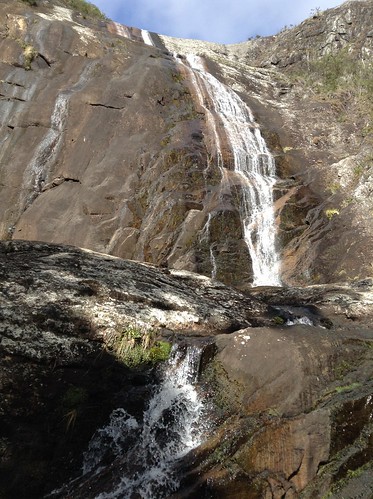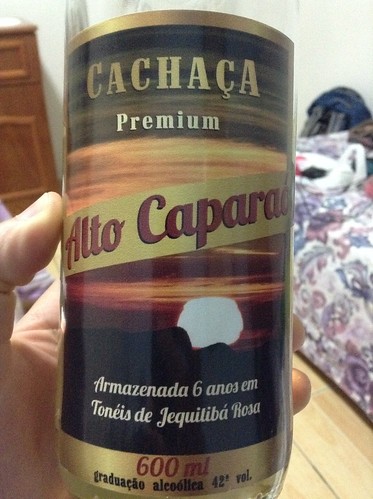Brazil loves its soapstone Jesus statues. The most notable is atop Mt. Corcovado in Rio de Janeiro. But I found another this past week atop Pico da Banderia, the third-tallest mountain in Brazil.

At 2,892 meters (9,488 feet), Pico da Banderia was once thought to be the tallest peak in Brazil, until measurement in the 1960s of two slightly taller peaks along the remote northern border with Venezuela, which is nearly inaccessible unless you have several weeks and lots of cash to pay for planes, boats, permits, and guides to trek through tribal-controlled land in the Amazon. I don’t have those things. So I went to Pico da Banderia.
Not that it’s exactly easy to get here, either. It took me three buses and about eight hours to travel a distance of just 250 km (155 mi) from the old colonial city of Ouro Preto to the tiny mountain village of Alto Caparaó, which is the jumping off point from the state of Minas Gerais to climb Pico da Banderia.
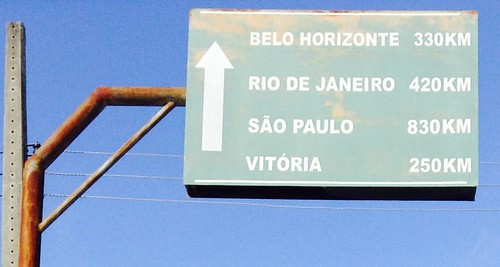
Once in Alto Caparaó, the mountain can be hiked in a day and without a guide. Many people stretch it into a several-day camping trip, or turn it into a multi-state hike by starting in Minas Gerais, hiking over the range, and finishing in the neighboring state of Espírito Santo.
In Alto Caparaó, I found a cheap local inn called Pousada Serra Azul (“Blue Mountain Hotel”) run by a friendly elderly couple: a pot-bellied grandpa who spoke indecipherable Portuguese, and his managerial wife with dyed-red hair. (She didn’t care too much about how her hair looked, because about two inches of solid grey was showing at the roots).
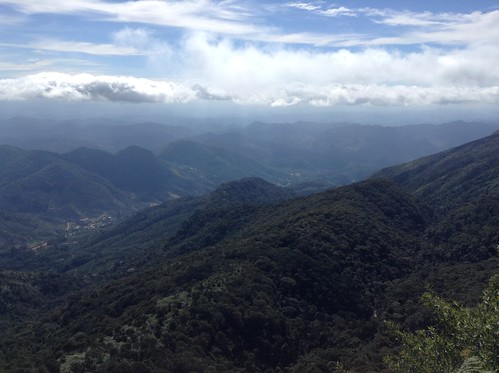
The next morning, after taking advantage of the pousada’s complimentary breakfast, I set off for the summit. The grandpa told me to bring a flashlight — I took his advice and brought my headlamp, which turned out to be unnecessary. I’d get home by lunch time.
Time and distance from town to summit: 3 hours, 15 km. I left at 7:30 am. It took about 30 minutes to jog 2 km over a cobblestone road to the entrance of Parque Nacional do Caparaó, where I had to register and pay an entry fee of 12.5 reais ($4). From there it was 6 km up a steep dirt road to a camp area called Tronqueira. From there starts the 7 km trail to the summit, where I arrived at 10:30 am.
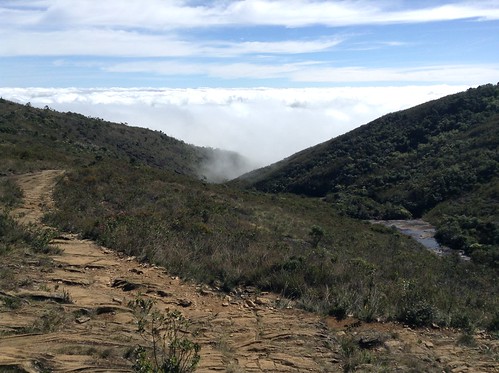
The total altitude gain from Alto Caparaó to the summit is 1,895 meters (6,217 feet), which is decent. (By comparison, a hiker gains a max 4,280 feet climbing straight up Mt. Washington in New Hampshire.) It’s a gentle and constant uphill — there’s no up and down, just up, which makes it easy to get into a rhythm.
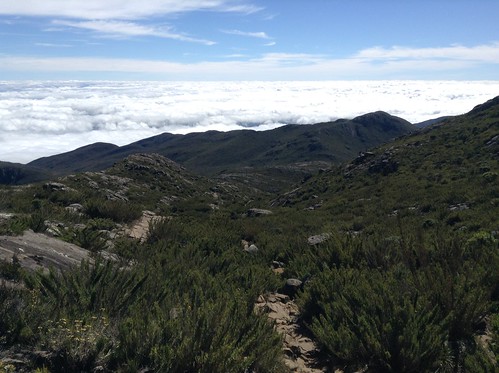
Two fixtures have been erected on the top the mountain: the first is the soapstone Jesus (symbol of life), and then slightly higher on a rocky outcropping is a concrete cross (symbol of sacrifice). Net symbolism: Life requires sacrifice? … Sacrifice requires life? … Hmmm.

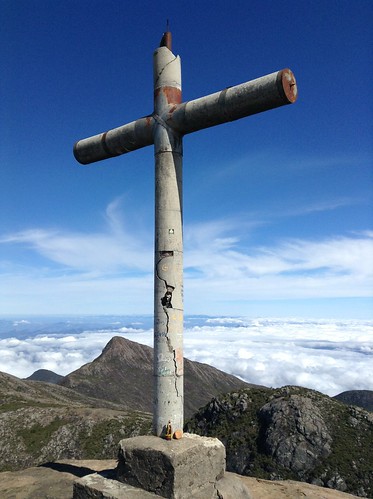
The view was spectacular. Looking eastward in the direction of Espírito Santo, I could see the Atlantic Ocean. Looking west toward Minas Gerais, it seemed I was standing atop a bed of thick clouds. A steady wind chilled me.
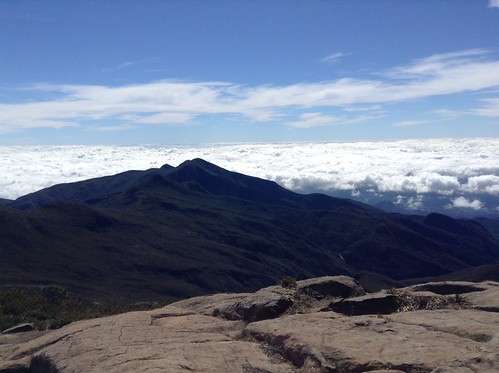
A family of five arrived to the summit and invited me to join in on their picnic lunch: sandwiches, apples, chocolates. We chatted, as best I could in my broken Portuguese, and the dad told me he was the national champion for body surfing. One of his sons was the junior champion. Another son was a taekwondo champion. I looked to the youngest son and asked, “And you?” The boy looked down.
“He’s a cowboy,” said his mother. “He rides horses.”
“That’s very hard!” I said. Funny that in such a family, a cowboy could be considered the wimpy oddball.
After an hour at the summit, I started the long downhill. I was back in town by 1:30 pm, so it was a 6-hour roundtrip hike, with easy jogging the last 9 km over the roads.
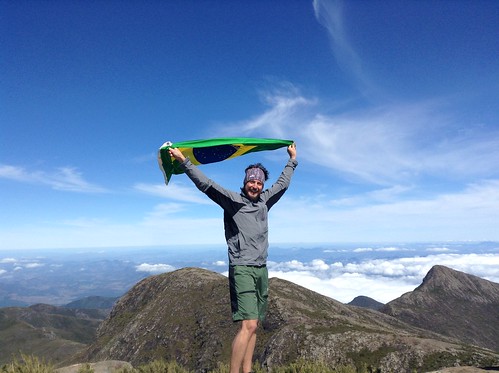
On the street, looking for a restaurant that might serve açaí, I bumped into the grandma from the pousada. We started chatting. I asked how many times she’d been to the summit of Pico da Banderia. “Never,” she said. In her 60-plus years of living in the mountain’s shadow, she’d never once had the desire to climb it.
She thinks I’m crazy to have come all that way to climb it. I think she’s crazy to have never climbed it. We each think the other is crazy. But it was a good working relationship.
I never found that açaí, so I settled for some local cachaça.
